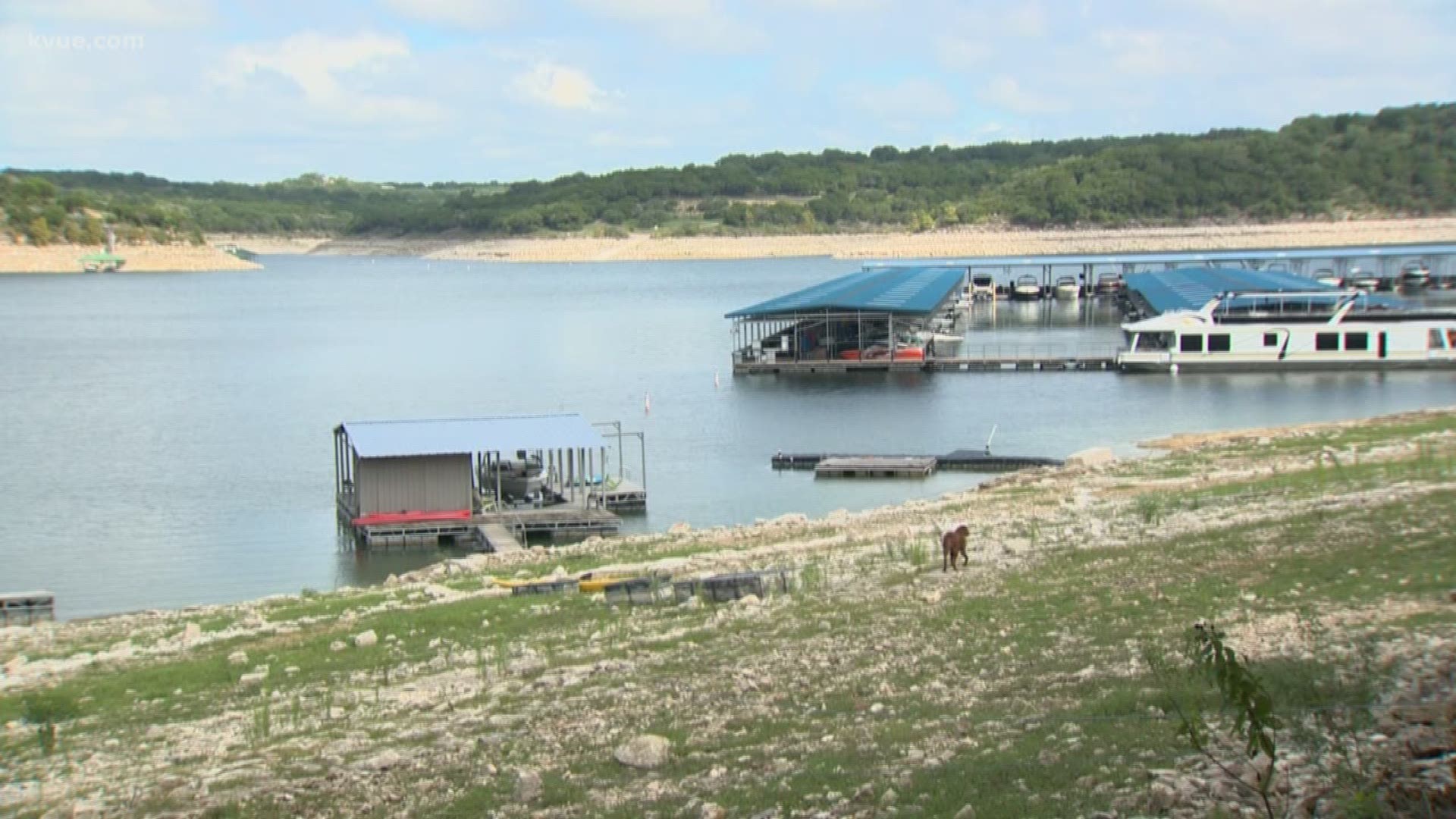AUSTIN — Lakefront living in Austin leaves a lot to chance.
"We never know what to expect," said Trent Chastain.
For decades, he has lived on Lake Travis, a backyard that for the last few years consists of more dry land than water.
"It has been steadily decreasing," he said. "Even when we have some rain, it never seems to come up."
Central Texas summers take their toll.
Demand and development drop lake levels
"This year it has dropped significantly faster than years past," said Chastain.
Lake Travis alone is down nearly two feet this summer. The Colorado River, which is what makes Lake Travis, Lake Austin and Lady Bird Lake, is where Austin gets most of its water.
Development, coupled with local and downstream demand, pushes lake levels across Central Texas down.
Hope on the horizon
"This type of construction project has not been done in our basin or any part of our state in decades," said John Hofmann, LCRA vice president of water.
Hofmann, who oversees the LCRA's water management programs, gave KVUE the first tour of a new reservoir. The Arbuckle reservoir is being built 150 miles from Austin near the Texas coast.
"This is what a 40,000 acre-foot reservoir looks like when it's ready to be filled," he said, showing us 1,100 acres of land in Wharton County.
To give an idea of just how much 40,000 acres of water is, consider this: That's more water than you find in Lady Bird Lake, Lake Austin and Lake Marble Falls combined. In fact, standing at the bottom of the reservoir would be like standing in 45 feet of water.
Why Wharton County?
Why three hours from Austin near the Texas coast?
"There's a lot more water closer to the coast," said Hofmann. "A lot more rainfall closer to the coast than the part of the Colorado River basin that actually feeds our Highland Lakes. So, if you think about it in terms of rainfall, we get about twice the amount of annual rainfall down here than we do at a place like Llano or Fredericksburg or Brady, and that's where the water supply comes from that feeds Buchanan and Lake Travis.”
This new reservoir will not only store water, it will release it, Providing water to rice farmers downstream and storing water triggered by flooding -- something that could have helped Austin in 2013 during the Halloween floods.
"That water came down the Colorado River, it swelled the Colorado River and we had no way to capture and store it for later use, none of that flood water," said Hofmann. "This reservoir project is strategically located to take advantage of those flows and to be able to store this water for usage.”
Meaning Lake Travis water levels may fluctuate less. That's welcome news for people like Chastain, who doesn't just live on the lake, he makes a living on it.
"It's probably the third or fourth lowest that I've seen it," said Chastain. "I think keeping this lake at a steadier level helps the economy out here, helps the economy in Austin, brings people out. I own a restaurant as well, and when the lake's like this it makes things difficult."
Leaving less to chance and more to prosper.

